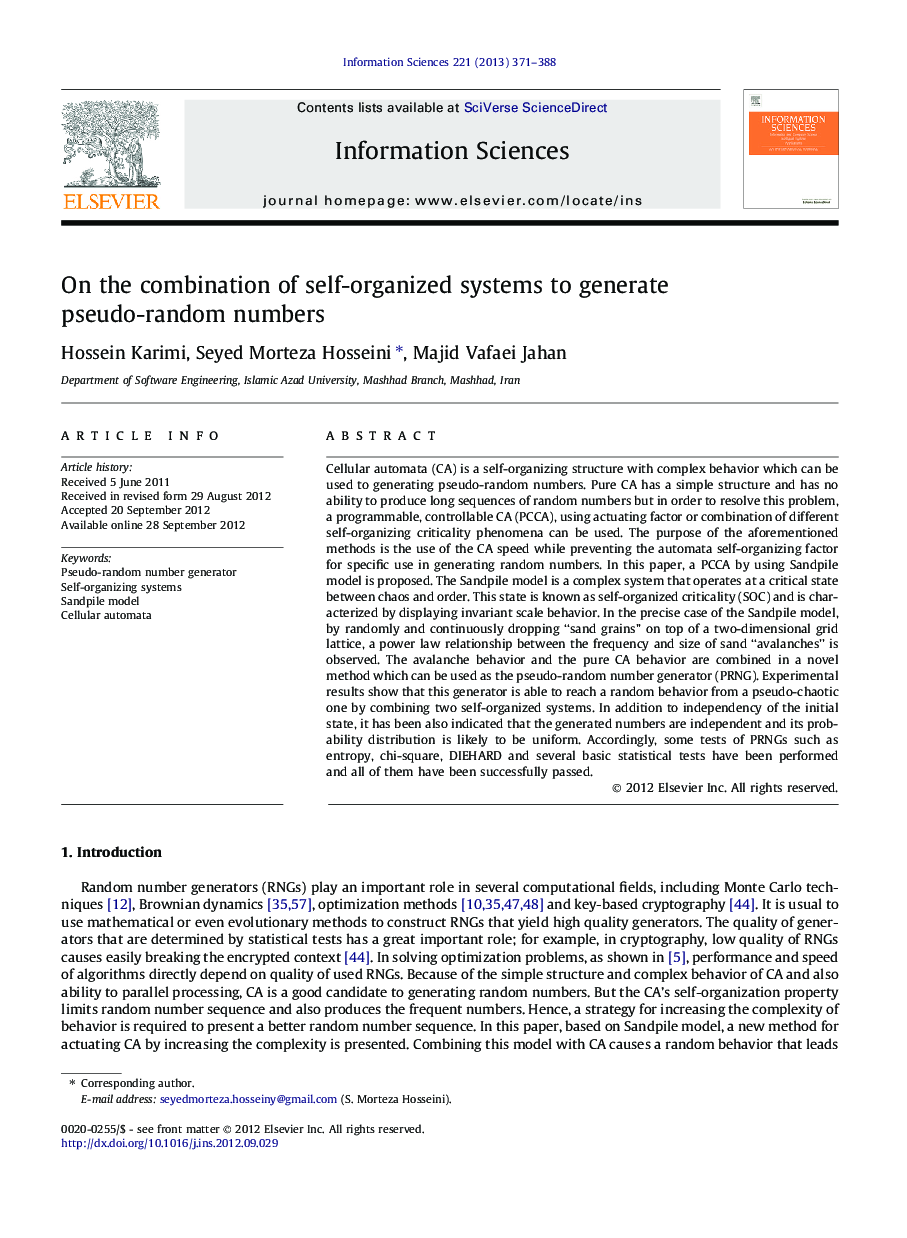| کد مقاله | کد نشریه | سال انتشار | مقاله انگلیسی | نسخه تمام متن |
|---|---|---|---|---|
| 392505 | 664774 | 2013 | 18 صفحه PDF | دانلود رایگان |

Cellular automata (CA) is a self-organizing structure with complex behavior which can be used to generating pseudo-random numbers. Pure CA has a simple structure and has no ability to produce long sequences of random numbers but in order to resolve this problem, a programmable, controllable CA (PCCA), using actuating factor or combination of different self-organizing criticality phenomena can be used. The purpose of the aforementioned methods is the use of the CA speed while preventing the automata self-organizing factor for specific use in generating random numbers. In this paper, a PCCA by using Sandpile model is proposed. The Sandpile model is a complex system that operates at a critical state between chaos and order. This state is known as self-organized criticality (SOC) and is characterized by displaying invariant scale behavior. In the precise case of the Sandpile model, by randomly and continuously dropping “sand grains” on top of a two-dimensional grid lattice, a power law relationship between the frequency and size of sand “avalanches” is observed. The avalanche behavior and the pure CA behavior are combined in a novel method which can be used as the pseudo-random number generator (PRNG). Experimental results show that this generator is able to reach a random behavior from a pseudo-chaotic one by combining two self-organized systems. In addition to independency of the initial state, it has been also indicated that the generated numbers are independent and its probability distribution is likely to be uniform. Accordingly, some tests of PRNGs such as entropy, chi-square, DIEHARD and several basic statistical tests have been performed and all of them have been successfully passed.
Journal: Information Sciences - Volume 221, 1 February 2013, Pages 371–388